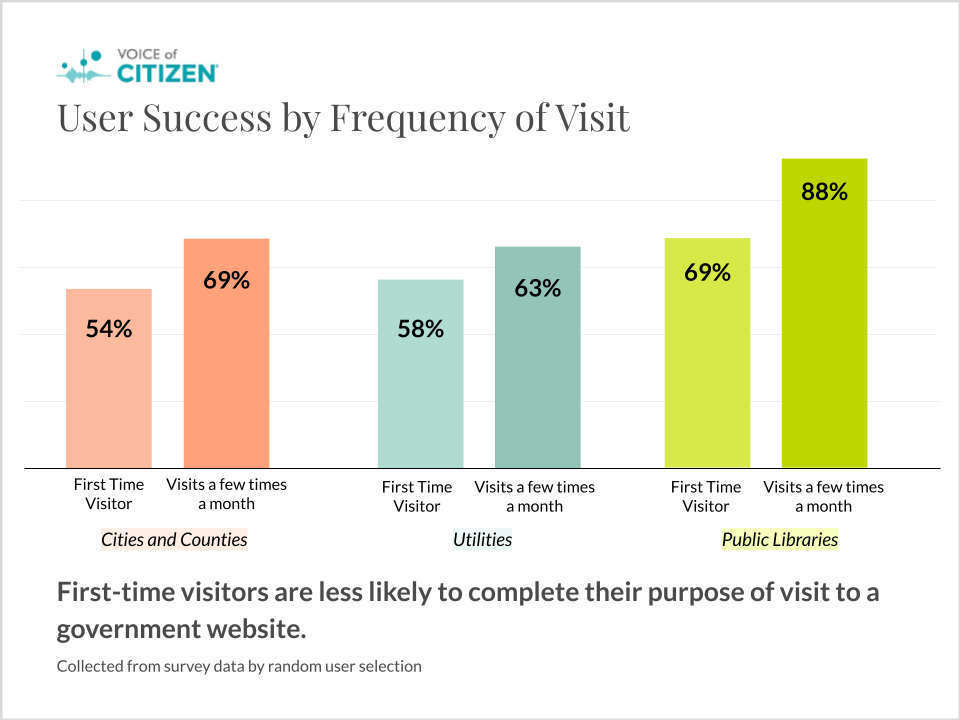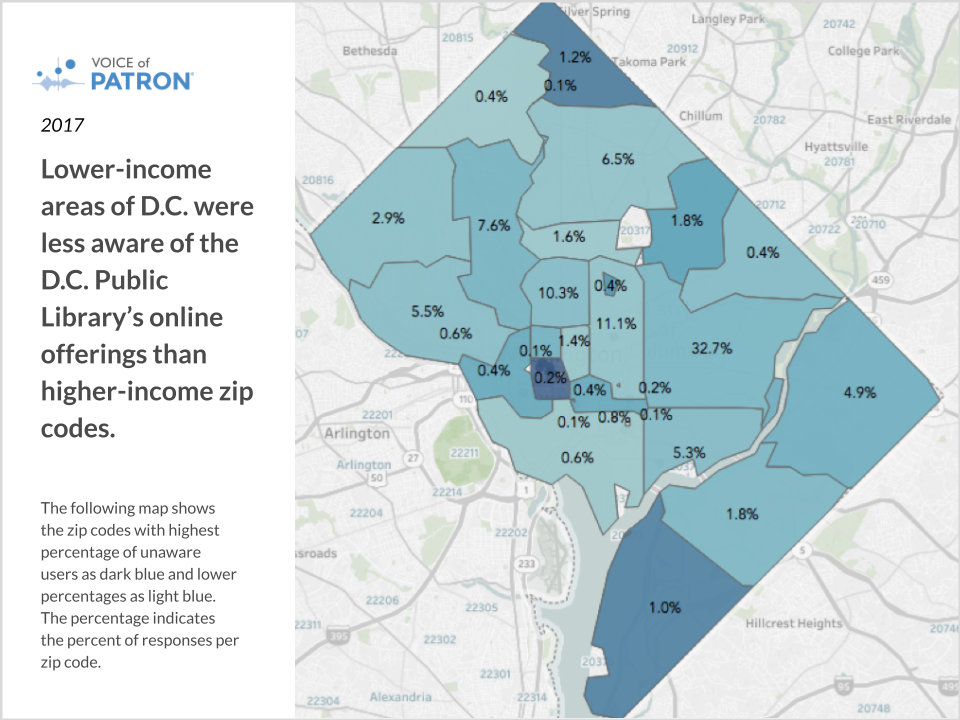
In the ever-evolving digital landscape, websites play a pivotal role in connecting governments with their target audiences. However, when it comes to user experience, first impressions are crucial. Websites that fail to provide an intuitive and seamless experience for first-time users often find themselves struggling to retain visitors and achieve their goals.
In theory, digital spaces can provide both services and better quality of life to more people than ever before. In practice, despite notable progress, digital spaces are not serving diverse populations equally. In this article, we'll explore why first-time users are generally less successful on websites that lack intuitiveness and why it's essential to understand their needs to enhance user success.
The Challenge of First-Time Users
First-time users face a unique set of challenges when navigating a website. They arrive with specific goals in mind, and their success hinges on how well the website can fulfill those goals. Unfortunately, many websites are not as intuitive as they could be, leading to a less than satisfactory user experience.
One of the primary reasons first-time users may struggle is the lack of familiarity with the website's layout and features. If a website is not designed with user-friendliness in mind, visitors can quickly become disoriented and frustrated, resulting in high bounce rates and low conversion rates.
Understanding First-Time Visitors
To address these challenges, it's crucial to put yourself in the shoes of a first-time visitor. What are they there to do? What information or services are they seeking? Identifying these critical aspects is the first step towards creating a more user-friendly experience.
For instance, an e-commerce website should make it easy for first-time users to find products, add them to their cart, and proceed to checkout. On the other hand, a news website should provide clear navigation to articles and breaking news updates. By understanding the primary goals of first-time visitors, you can tailor the user experience accordingly.
Optimizing Key Services and Areas
Once you've identified what draws first-time visitors to your website, the next step is to ensure that those services or areas are in the best possible shape. This involves optimizing the user interface, streamlining processes, and providing clear calls to action.
For instance, if you manage a government tourism website, you could prioritize streamlining the booking process for government-operated tourist attractions and services, providing comprehensive information on various tourist destinations within your region or country, and offering responsive customer support options for tourists. By ensuring that these essential services are user-friendly and easily accessible, you increase the likelihood of tourists, including both local and international visitors, successfully achieving their travel goals while exploring your region or country.
The success of a website often hinges on how well it caters to first-time visitors. When users encounter a site that is not as intuitive as it could be, they are more likely to leave in frustration. To combat this issue, it's essential to understand the specific needs and goals of first-time users and optimize the key services and areas accordingly. By doing so, you can create a positive first impression, increase user satisfaction, and ultimately achieve better outcomes for your website.
Diversity, Equity, and Inclusion
In the pursuit of Diversity, Equity, and Inclusion (DEI) goals, organizations are increasingly recognizing the value of listening to diverse voices and perspectives.
First-time users to government websites often overlap with communities you’re targeting in your digital inclusion efforts. Learning about those who have arrived at your digital front door can help reveal what you need to know about those who haven’t, even if first-time users are a tiny percentage of overall visits.
First-time user success on your website is an indicator of your level of inclusivity in your web design. Accurately and precisely identifying what impacts first-time user success, then, ought to be your top priority as you strive to improve DEI.
The Power of Listening Sessions
Hosting DEI listening sessions is an effective way to gather valuable insights, and partnering with organizations, especially non-profits with whom you already have a relationship, can provide the data needed to make meaningful progress.
Listening sessions serve as a platform for employees, customers, and stakeholders to share their experiences, perspectives, and suggestions regarding diversity, equity, and inclusion within an organization. These sessions provide a safe and open space for dialogue, helping to identify blind spots, uncover hidden issues, and foster a sense of belonging.
Leveraging Existing Relationships
When it comes to sourcing valuable data for DEI initiatives, partnering with organizations you already have a relationship with, especially non-profits, can be a strategic move. Here's why:
- Trust and Familiarity: Existing relationships often come with a foundation of trust. Non-profits, in particular, are driven by missions aligned with societal betterment, making them reliable partners in your DEI efforts.
- Shared Values: Collaborating with organizations that share your commitment to DEI ensures alignment in values and objectives. This synergy can lead to more meaningful and effective listening sessions.
- Access to Diverse Audiences: Nonprofits frequently work with diverse communities, making them a valuable resource for tapping into underrepresented voices and perspectives.
Collecting Crucial Data
To meet DEI goals, government entities need data that reflects the real experiences and needs of their employees and stakeholders. Partnering with nonprofits for listening sessions can provide access to these essential insights. Participants are more likely to share candid feedback in a familiar and trusted environment, leading to more accurate and actionable data.
During a potential community listening session, you want to hear thoughts and insights from organizations in order to help you enhance your website's accessibility, user-friendliness, and inclusivity. Here are some examples of questions I.F. uses to engage with meaningful organizations within a City or County:
Website Usage
- Do you currently use our website?
- If so, could you share why you use it, and what specific aspects are appealing to you?
- If you don't use our website, is there a particular reason or challenge that prevents you from doing so?
- Have you encountered difficulties while trying to use our site?
Online Navigation
- How do you typically access websites? (e.g., desktop, mobile, assistive technology)
- What features on other websites make them easy for you to use, and what aspects do you appreciate in terms of user-friendliness?
Thoughts on Our Website
- Could you share your overall thoughts on our current website?
- What aspects do you find particularly positive or negative?
Website Improvements
- Are there specific tasks or actions you wish you could perform on our website but currently cannot?
- Are there tasks that you find particularly challenging or time-consuming on our site?
- Is there information that you've struggled to locate on our website?
- Are there any types of information or features you wish were available on our website but are currently missing?
Turning Insights into Action
The data collected from listening sessions is only valuable if it translates into action. Organizations can use the insights to develop targeted DEI strategies, adjust policies and practices, and create a more inclusive culture. Moreover, sharing the progress and outcomes of these initiatives can enhance your reputation as a socially responsible and inclusive organization.
In conclusion, hosting DEI listening sessions through partnerships with organizations, especially non-profits, can be a transformative step towards achieving your diversity, equity, and inclusion goals. It not only ensures access to crucial data but also strengthens relationships with trusted partners who share your commitment to driving positive change. By amplifying diverse voices and acting on their insights, organizations can pave the way for a more inclusive and equitable future.
An excellent first-time user experience indicates you asked the right questions, listened carefully to the answers, and implemented best practices that will position you to continue extending your reach.
A simpler, accessible online presence is within your organization's reach. Reach out to us to learn more about what you can do today to improve your website’s first-time user success.
----
First-time Website User Data Can Help You Understand Disadvantaged Communities
First-time users to government websites often overlap with communities you’re targeting in your digital inclusion efforts. Learning about those who have arrived at your digital front door can help reveal what you need to know about those who haven’t, even if first-time users are a tiny percentage of overall visits.
First-time user success on your website is an indicator of your level of inclusivity in your web design. Accurately and precisely identifying what impacts first-time user success, then, ought to be your top priority as you strive to improve DEI. Take a look at our aggregated statistics for user success from millions of government website visitors in the graph below:

Are you relying on the wrong metrics?
Municipal organizations typically rely on Google analytics to provide relevant statistics about users. Knowing pageviews and click numbers may be valuable for e-commerce websites, but they don’t translate well to municipalities and government organizations. If you want to know if your site is effectively serving your community, the single most important data point is not how many people have visited your site or how long they stayed there but whether or not your users are able to accomplish the task they set out to complete. We call this user success.
Emphasis on the wrong metrics leave you totally in the dark about how your website serves those it was created for. But focusing on the right metrics can not only help you identify services or areas of the site in need of improvement but also explore how your site is serving individuals who are new to engaging with you online.
A simple survey can provide the data you need most to meet DEI goals
Surveys about user success can give solid clues about how to build a more inclusive website. This data allows you to extrapolate about how to attract those digitally left behind. Surveys can also help you decide where to invest your next research funds.
You can start simply by asking:
- Why did you visit [your website] today?
- Were you able to complete the purpose of your visit?
- How often do you visit [your website]?
The results from this simple survey can offer:
- Multiple-source data points. You can administer surveys with pen and paper in a focus group or hand surveys out to visitors at a physical location. You can also send surveys out by email or embed a survey on your website.
- Big benefits at low-to-no cost. Pen and paper is cheap and easy — as is integrating short surveys into your website’s user experience. Most online survey tools will provide a link or snippet of code to make your survey easy for users to access.
- Fast results. Survey results can be calculated quickly, which allows you to implement changes more quickly.
Meeting First-Time Users’ Needs Can Move the Needle on DEI

Our research shows that aggregate first-time visitors across many government websites only succeed roughly half the time. That means that other underserved users — the elderly, the disabled, and those in remote areas — are likely struggling on your site.
Two elements can increase your chances of higher user success rates, even for individuals visiting the site for the first time: easy on ramps to key task areas and meeting accessibility standards.
Make it easy for all users to find their way
If you ran a retail store, you wouldn’t want your customers endlessly walking up and down the aisles looking for an item. Nor would you want them giving up and leaving the store empty handed.
Similarly, if new visitors to your website struggle or get lost, they may leave your site without the information they need.
The Johnson County, Kansas website has an example of an easy on ramp. The home page features drop down menus that allow residents to easily select tasks and be directed to pertinent information. The home page illustrates an understanding of users’ greatest needs and offers clear answers to their most frequent questions.
Prioritize accessibility to promote ease of use
When you follow Web Content Accessibility Guidelines (WCAG), your website should be perceivable, operable, understandable, and robust. When you work toward these four qualities, you're creating a better experience for individuals who may be interacting with your site in a non-standard way. You're also elevating the experience for everyone.
You’ll need to test elements like:
- Color contrast. The text and text background contrast ratio should be at appropriate levels for colorblind and other visually-impared users.
- Alt text for users with screen readers. Users with cognitive or visual disabilities depend on alt text to take the place of informative images.
- Interactive content (drag-and-drops, accordions, and sliders) need modification to meet WCAG standards.
- Text spacing and font sizes. Text that is too tight or too small is a big issue for the visually impaired.
In addition to running an accessibility audit, you’ll also want to test the reading level of your website. In order for your website to be accessible to all, including the disadvantaged, a 6th - 8th grade reading level is most appropriate.
If first-time users are able to successfully navigate your site and achieve the purpose of their visit, you’re better positioned to meet underserved users.
Your Municipal Website Should Be a DEI Investment
When your website is current, useful, and accessible, your first-time users are more likely to report they accomplished the goal of their visit. An excellent first-time user experience indicates you asked the right questions, listened carefully to the answers, and implemented best practices that will position you to continue extending your reach.
A simpler, accessible online presence can improve your organization's reach. More importantly, it’s an investment in a more connected community.